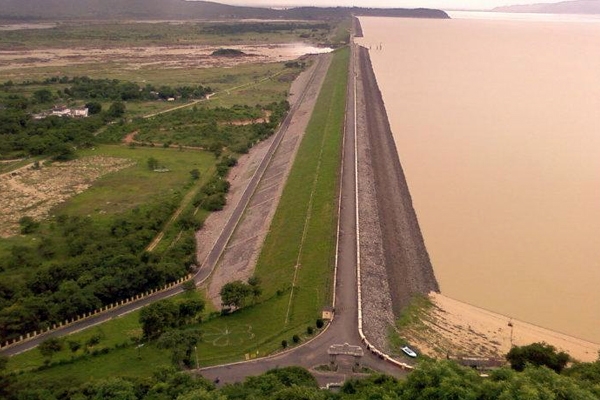
Sambalpur is a city in Sambalpur district in the Indian state of Orissa. It lies at a distance of 321 km from the state capital Bhubaneswar. Sambalpur is the headquarters and the largest city of Sambalpur district. It is also the commercial capital of Western Orissa. The District is surrounded by Deogarh District in the East, Bargarh and Jharsuguda Districts in the West, Sundargarh District in the North and Sonepur and Angul Districts in the South. Sambalpur derives its name from Goddess Samaleswari, an incarnation of Shakti and the presiding deity of the Samaleswari Temple located in the city which is one of the major tourist attractions. Sambalpur derives its name from that of the Goddess Samalei who is regarded as the reigning deity of the region. In history, it has also been known as 'Sambalaka'.
History
The history of Sambalpur, as depicted by eminent historians, is full of events including Indian freedom struggle representing the different sections of society. Sambalpur is an ancient district of India, which survived even in the prehistoric age and holds a very important place in the history of Orissa and India.
Sambalpur is mentioned in the book of Ptolemy (Claudius Ptolemaist) as Sambalaka on the left bank of river "Manada", now known as Mahanadi, other evidence are available from the records of Huan Tsang and in the writings of the celebrated King Indrabhuti of Sambalaka of Odra Desha or Oddiyan (oldest known king of Sambalpur), the founder of Vajrayana Buddhism and the Lama cult. He has written the book Jnanasiddhi.
French merchant Jean Baptiste Tavernier (1605–1689) in his travel account wrote about the numerous famous diamond mines of Sumelpur (Semelpur), the present day Sambalpur. He states that, 8,000 people were at work in these mines at the time of his visit, in the dry season at the beginning of February.
Vajrayana Buddhism
Although it is generally accepted that Tantric Buddhism first developed in the country of Uddiyana or Odra Desha under King Indrabhuti, there is an old and well known scholarly dispute as to whether Uddiyana or Odra was in the Swat valley, Orissa or some other place.
Indrabhuti, the oldest known king of Sambalpur founded Vajrayana while his sister who was married to Yuvaraja Jalendra of Lankapuri (Subarnapura) founded Sahajayana. These new Tantric cults of Buddhism introduced Mantra, Mudra and Mandala along with six Tantric Abhicharas (practices) such as Marana, Stambhana, Sammohana, Vidvesan, Uchchatana and Vajikarana. The Tantric Buddhist sects made efforts to raise the dignity of the lowest of the low of the society to a higher plane. It revived primitive beliefs and practices a simpler and less formal approach to the personal god, a liberal and respectful attitude towards women and denial of caste system.
From the seventh century A.D. onwards many popular religious elements of heterogeneous nature were incorporated into Mahayana Buddhism which finally resulted in the origin of Vajrayana, Kalachakrayana and Sahajayana Tantric Buddhism. Tantric Buddhism first developed in Uddiyana, a country which was divided into two kingdoms Sambhala' and Lankapuri. Sambhala has been identified with Sambalpur and Lankapuri with Subarnapura (Sonepur).
The Leaning Temple of Huma
The Leaning Temple of Huma is located about 25 km from Sambalpur. The 17th century temple of Huma leans at an approximate angle of 47 degrees to the west.
Samaleswari Temple
This is the main temple of Goddess Samaleswari, located on the banks of river Mahanadi. Sambalpur owes its name to her.
Ghanteswari Temple
Located 33 kilometres south-west of Sambalpur and on the bank of river Mahanadi, this temple played an important role for navigation in the past. It was called a light house without a light. A temple also existed here, of Goddess Ghanteswari from whom the place got its name. Earlier there were some large bells on this spot and with the help of wind those created enormous sound which made the navigators aware of this treacherous spot. This area being the conglomeration of three streams of water of the Mahanadi River, the water current here is very dangerous forming a whirlpool. Here the wind blows quite heavily which caused the bells to produce sound. The specialty of this temple area is thousands of bells hanging everywhere, the only place of its kind in Orissa.








